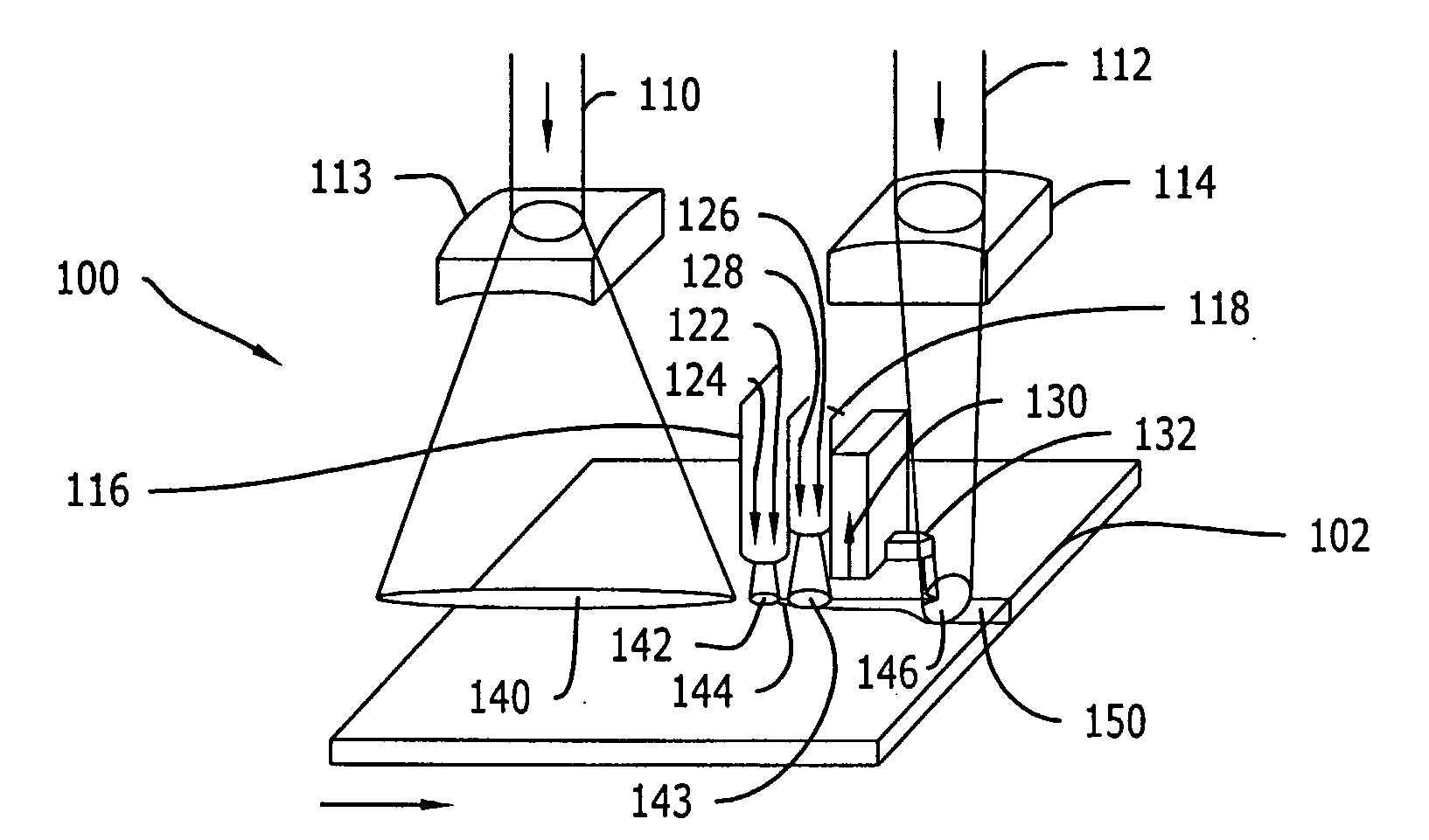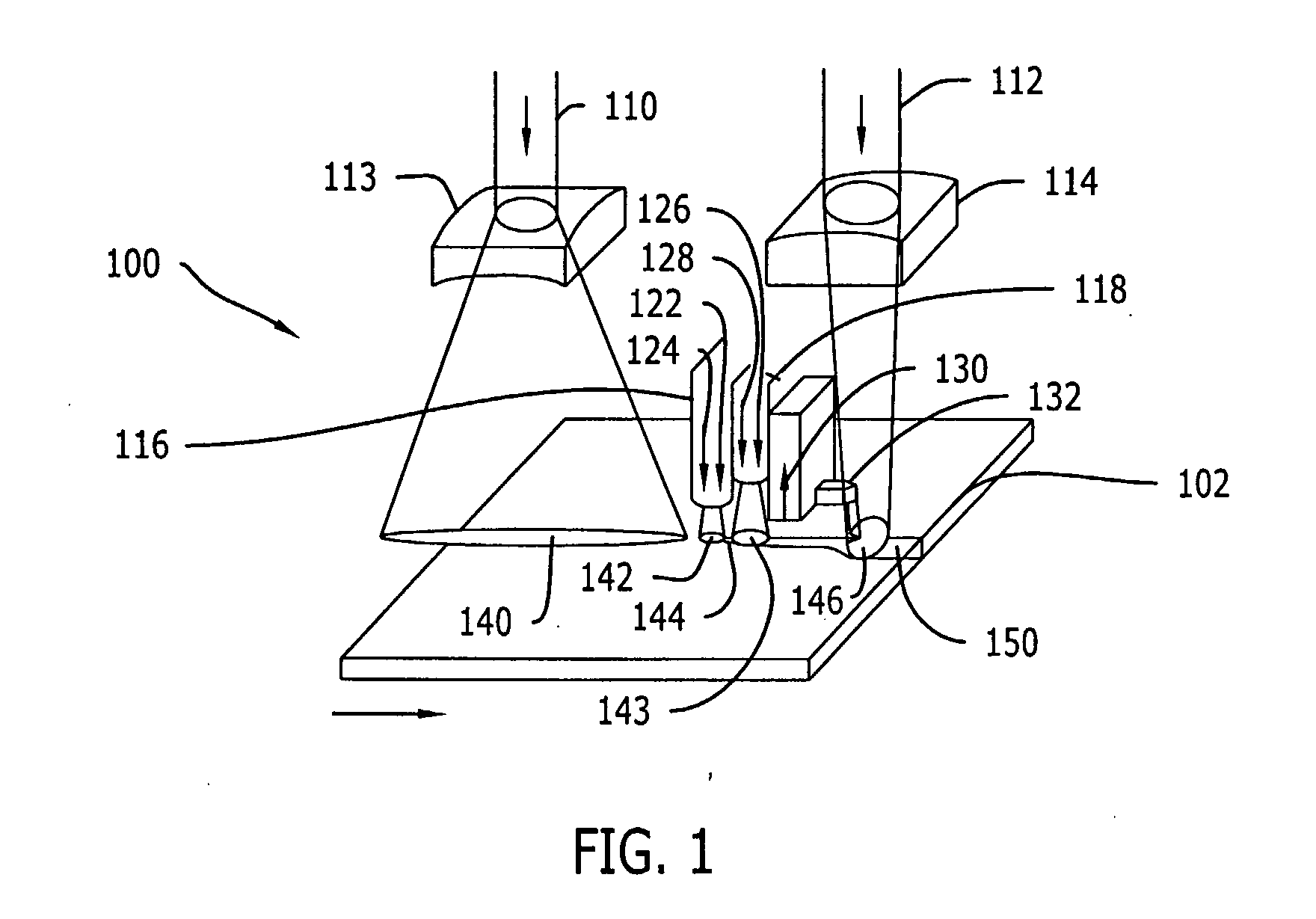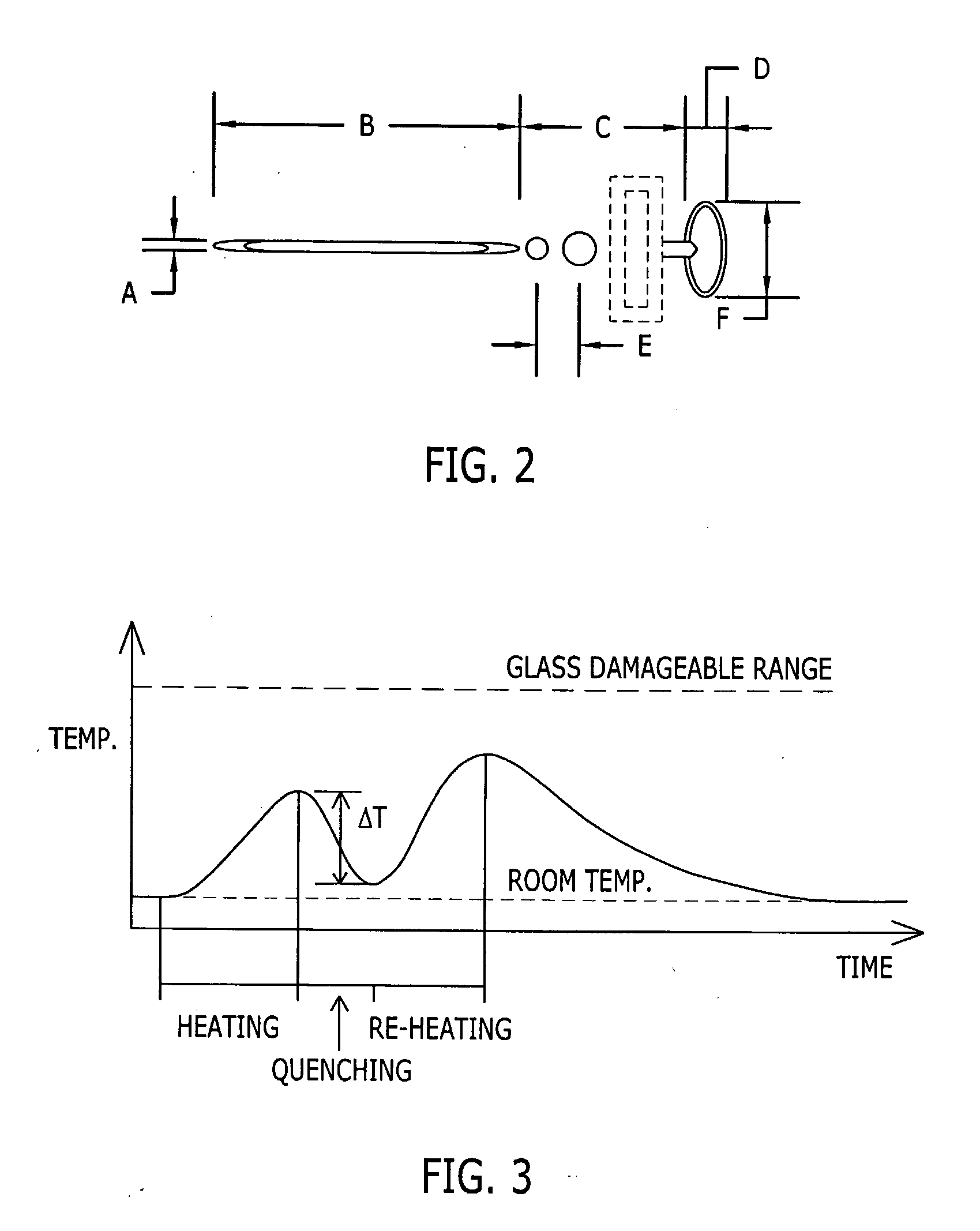Device, System and Method for Cutting, Cleaving or Separating a Substrate Material
a substrate material and cutting technology, applied in glass making apparatus, manufacturing tools, welding/soldering/cutting articles, etc., can solve the problems of slow process speed, poor understanding of laser scribing mechanism, and inability to meet the needs of many applications, and achieve fast, reliable laser scribing.
- Summary
- Abstract
- Description
- Claims
- Application Information
AI Technical Summary
Benefits of technology
Problems solved by technology
Method used
Image
Examples
Embodiment Construction
[0079] Herein below, the embodiments of the present invention are described with reference to the accompanying drawings.
[0080]FIG. 1 is a schematic overview of an apparatus for separating nonmetallic materials according to the present invention. The separating apparatus generally indicated by reference numeral 100 for separating a nonmetallic material 102 includes two laser beams 110 and 112 and at least two quenching nozzles 116 and 118.
[0081] The nonmetallic substrate 102 is moved along relative to the separating apparatus 100 in the direction shown by the arrow below the nonmetallic substrate 102, such as glass. The laser beam 110 passes through a lens 113 and focuses to a scribe laser beam heating region 140. The two quenching nozzles 116 and 118 are shown schematically as forming quenching zones 142 and 143, respectively on the nonmetallic substrate 102. Between the quenching zones 142 and 143 is a propagated scribe line 144. The laser beam 112 passes through a lens 114 and f...
PUM
| Property | Measurement | Unit |
|---|---|---|
| Length | aaaaa | aaaaa |
| Angle | aaaaa | aaaaa |
| Power | aaaaa | aaaaa |
Abstract
Description
Claims
Application Information
 Login to View More
Login to View More - R&D
- Intellectual Property
- Life Sciences
- Materials
- Tech Scout
- Unparalleled Data Quality
- Higher Quality Content
- 60% Fewer Hallucinations
Browse by: Latest US Patents, China's latest patents, Technical Efficacy Thesaurus, Application Domain, Technology Topic, Popular Technical Reports.
© 2025 PatSnap. All rights reserved.Legal|Privacy policy|Modern Slavery Act Transparency Statement|Sitemap|About US| Contact US: help@patsnap.com



